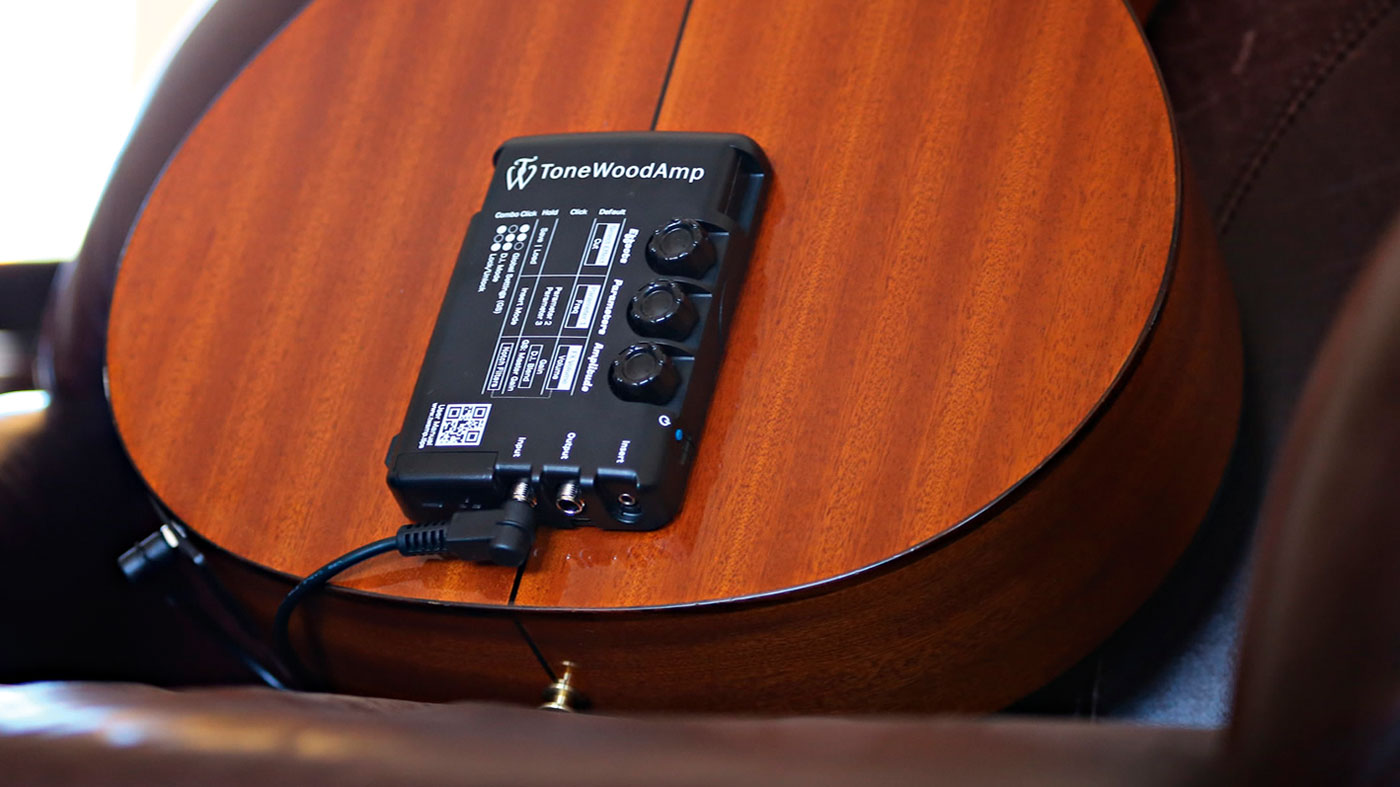Mike Dawes: this is how I arranged Metallica's One for one guitar
The acoustic tapping titan discusses technique and percussive problem-solving

The British acoustic virtuoso Mike Dawes tells us how he perfected the art of one-man multitasking...
It’s one thing to play guitar in a group, using the rhythmic and melodic infrastructure laid down by others as a foundation for your own voice, and something else entirely to be the band.
Hailing from Somerset, 28-year-old Mike Dawes plays instrumental acoustic pieces that see him covering all corners of the sonic spectrum alone - with intelligent chords and percussion embellishing gorgeous melodies. And the 10 fresh compositions and two live cuts on new album Era will amaze.
I was an electric player growing up, but through Pierre Bensusan’s music I began to experiment with open tunings, specifically DADGAD
“I grew up in a small town with few other players to jam with, but given that I’m a massive control freak, covering all the elements came very naturally,” begins Mike.
“The real motivation in refining this style was discovering Eric Roche and his percussive work, along with all the Stanley Jordan two-handed stuff. I was an electric player growing up, but through Pierre Bensusan’s music I began to experiment with open tunings, specifically DADGAD.
“I quickly discovered how easy two-handed tapped harmonies were in this tuning, as there are so many accessible octaves and fifths available. You’d be amazed at how inspiring a new tuning can be. A couple of the tunes on Era are in open Bm9 tuning (B F# C# D A D) to give me this really appealing dissonance between the third and fourth strings.”

The key components behind the sound
“I’ve been on the road with my signature guitar by Andreas Cuntz from Germany. It’s a sitka/rosewood combo with a tight body and narrow string spacing loaded with Dimarzio pickups. The Black Angel magnetic Nick Benjamin and I co-designed (Mike plays guitars built by Benjamin too) with Larry Dimarzio. It features on all but one track on Era.
“The Tonewood Amp is just a joy to play with too, it’s a little device that sticks magnetically to the back of your acoustic and projects reverb, delay and a host of other effects through the soundhole of your guitar. There is no speaker on it, it allows the resonance of the guitar to become the speaker. It’s an inspiration box.”
That might sound straightforward but imagine one person playing multiple parts on one single acoustic - save for a few overdubbed electric solos - and it quickly becomes quite the logistical nightmare.
Want all the hottest music and gear news, reviews, deals, features and more, direct to your inbox? Sign up here.
For example, the jazz/folk guitarist tells us it took almost nine years to arrange his ‘new’ cover of 1988 Metallica classic One - carefully plotting the right chordal embellishments so that he would also be able to navigate through its vocal melodies, not forgetting Lars Ulrich’s backbeat…
“I just didn’t quite have the musical awareness nine years ago to produce an effective arrangement,” he admits.
“Not every song will turn into an effective arrangement. There are only a few Metallica tunes that would work in this context. Your melody needs to be like a mountain range and the harmony needs to be interesting.
“The drum patterns in that tune were easy to replicate. The one part I had to compromise on was the [electric] outro solo. I trigger loops when the chugging starts; once you get into the whole shredding over looping territory, it’s hard to control the backing!”
Patience pays off
As for his own music, there is also method to the madness… and patience is a virtue.
“Some tunes on Era took a week, some took years to perfect,” reveals Mike. “It is very time-consuming, but I’m getting better.
“Often I will write the melody and bassline first and then fill the middle strings with colour. A lot of the chords are built on what is accessible in the tuning, but I do have a tendency to rely on those juicy minor 11th chords on the second degree of the major scale. It’s a bit of a fingerstyle cliché, but I love a bit of cheese!”
There is no harmony in bashing on your guitar’s body between notes. A drummer plays with the band, not in the gaps
The guitarist admits much of his sound relies on the right hand keeping that all-important pulse when, of course, there’s no-one else there to do it for you.
“There are a few micro-techniques I’ve developed in the right hand, which have a huge amount to do with my sound,” notes Mike. “I also imagine a ‘grid system’ where I try and problem-solve every possible combination of sounds, and work through this imaginary grid until the song is served.
“For example, how can I get a single bass note with a single kick drum? I would rest the thumb on the bottom string and as I pick I rock the heel of my hand back into the soundboard. It’s all problem-solving!
“I try and keep my picking hand as close to the strings as possible,” Mike says, “often with a grip on the strings themselves. My kicks, hats and snare sounds all involve the strings because we are accompanying the melodies with percussion, not replacing them.
“This is something I really like to enforce. There is no harmony in bashing on your guitar’s body between notes. I’m aware that a drummer, for example, plays with the band, not in the gaps. My approach is built around combining sounds and textures not necessarily alternating between elements.”
Making the technically complicated accessible and impactful is what defines Mike as a gifted player and composer... and makes us realise we’ve got some practising to do!
Mike Dawes' new album Era is out now via QTEN Records.
Amit has been writing for titles like Total Guitar, MusicRadar and Guitar World for over a decade and counts Richie Kotzen, Guthrie Govan and Jeff Beck among his primary influences. He's interviewed everyone from Ozzy Osbourne and Lemmy to Slash and Jimmy Page, and once even traded solos with a member of Slayer on a track released internationally. As a session guitarist, he's played alongside members of Judas Priest and Uriah Heep in London ensemble Metalworks, as well as handling lead guitars for legends like Glen Matlock (Sex Pistols, The Faces) and Stu Hamm (Steve Vai, Joe Satriani, G3).


